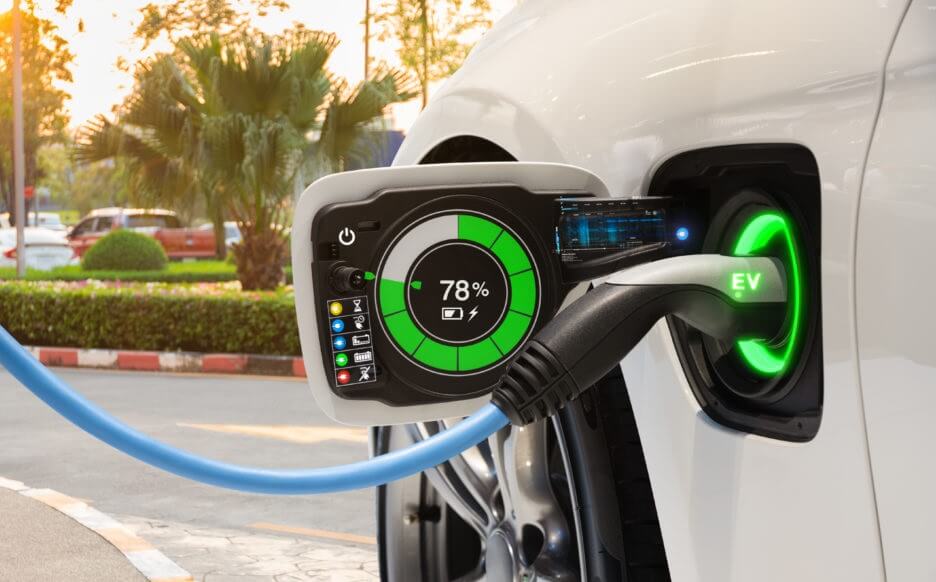By 2040, 19 years from now, almost all new cars sold globally would be Electric Vehicles (EVs), predicts UBS Investment Bank.
Already, the United States has set a target to make half of all new vehicles sold in the country in 2030 zero-emissions vehicles.
Advertisement
President Joe Biden signed an Executive Order to that effect on August 5, 2021.
A statement by the White House said the Executive Order was aimed at saving consumers money, cutting pollution, boosting public health and helping to tackle Climate Change.
But while the U.S., China and European countries have witnessed increased patronage of electric cars, EVs have remain rare in most of Africa.
HOW ELECTRIC CARS WORK
Advertisement
Electric cars are plugged to a charge point from where they take and store electricity in rechargeable batteries.
These batteries then power an electric motor that turns the wheels of the cars.
The zero-emissions vehicles do not emit exhaust gas and they come in three types; battery electric vehicles (BEVs), plug-in hybrid electric vehicles (PHEVs) and fuel cell electric (FCEVs).
BEVs are powered solely by an electric battery, with no gas engine parts. Most of them are capable of fast charging.
PHEVs are a combination of petrol and electric vehicles. They have a battery, an electric motor, a petrol tank and an internal combustion engine.
Advertisement
FCEVs, however, produce electricity using a fuel cell powered by hydrogen. The amount of energy stored in the car is determined by the size of the hydrogen fuel tank. This differs from all-electric vehicles, where the amount of power available is related to the battery’s size. The hydrogen tank is refilled at a hydrogen station just like an everyday petrol station.
Most FCEVs are said to use batteries for recapturing braking energy to provide extra power to the vehicle.
Going by President Biden’s order, it is safe to say that electric cars will most likely become more popular than they are now, and with other countries amplifying their productions and sales of electric cars in recent years, this is set to become a norm in the developed world.
Most Popular Electric Vehicle
According to Statista.com, the most popular electric car in the world is the Tesla Model 3. After selling a total of 439,760 units in 2020, the Model 3 is the best-selling plug-in electric car of all time and it is of the battery electric vehicle category.
FEATURES/COMPONENTS OF TESLA MODEL 3:
Advertisement
- SPEED: The Model 3 accelerate from a speed of 0-60mph in 3.1 seconds and can acheive a top speed of 162 mph. It comes with the option of dual motor all-wheel drive, 20-inch Überturbine Wheels and Performance Brakes as well as lowered suspension for total control, in all weather conditions.
- BATTERY LIFE/RECHARGING: The Model 3 can go up to 353 miles with a single charge, it can also recharge up to 175 miles in 15 minutes at Tesla’s supercharger locations. According to its website, Tesla has placed Superchargers along more than 25,000 well-traveled routes around the world.
- AUTOPILOT: The car has 360-degree rear, side and forward-facing cameras, providing the driver maximum visibility. It also has 12 ultrasonic sensors which detect nearby cars, prevent potential collisions and assist with parking. Some newer Tesla models provide 100% autopilot feature.
- INTERIOR: The interior of this car is different from the everyday car. It has no dashboard, instead all driver controls and gauges can be accessed in the central 15-inch touchscreen. Car owners can use their smartphones as a key, and the car’s all glass roof extends from front to back, creating a sense of openness from every seat.
ENGINE
The Alternative Fuels Data Center (AFDC) under the U.S Department of Energy gives a breakdown of how all-electric cars or battery electric vehicle (BEV) engines work and their key components. The Tesla Model 3 falls under the battery electric vehicle category.
According to the AFDC, the cars have an electric motor instead of an internal combustion engine, which regular petrol engine cars have. This vehicle uses a large traction battery pack to power the electric motor and the battery pack must be plugged in to a wall outlet or charging equipment. The components of a Battery Electric Vehicle are:
- BATTERY (ALL-ELECTRIC AUXILIARY): The auxiliary battery provides electricity to power vehicle accessories.
- CHARGE PORT: Just like a phone charge port, this is the part that allows the vehicle to connect to an external power supply in order to charge the traction battery pack.
- DC/DC CONVERTER: This device converts higher-voltage direct current (DC) power from the traction battery pack to the lower-voltage DC power needed to run vehicle accessories and recharge the auxiliary battery.
- ELECTRIC TRACTION MOTOR: This device uses power from the traction battery pack to drive the car’s wheels. Some vehicles use motor generators that perform both the drive and regeneration functions.
- ON-BOARD CHARGER: This takes the incoming alternating current (AC) electricity supplied through the charge port and converts it to direct current (DC) power which is used to charge the traction battery. It also communicates with the charging equipment and monitors battery characteristics such as voltage, current, temperature, and state of charge while charging he pack.
- POWER ELECTRONICS CONTROLLER: The power electronics controller manages the flow of electrical energy delivered by the traction battery, which controls the speed of the electric traction motor and the torque it produces.
- THERMAL SYSTEM (COOLING): Maintains a proper operating temperature range of the engine, electric motor, power electronics, and other components.
- TRACTION BATTERY PACK: This is where the electricity is stored for use by the electric traction motor. It is also the traction battery pack that receives the electricity from the external power supply through the charging port.
- TRANSMISSION (ELECTRIC): This device transfers mechanical power from the electric traction motor to drive the wheels.



